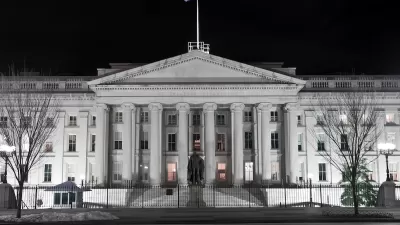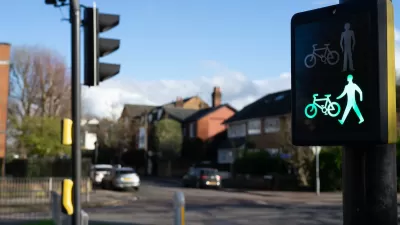Jeff Speck, author of Walkable City, argues that reducing the width of traffic lanes would be a panacea for the disastrous public health outcomes of traffic safety.

Jeff Speck makes a strong statement in an article for CityLab: "the single best thing we can do for the health, wealth, and integrity of this great nation is to forbid the construction, ever again, of any traffic lane wider than 10 feet."
The article begins by setting the history of the 12-foot lane and the agencies that have designed wide lanes despite the consequences. Many cities design streets with lanes wider than ten feet, according to Speck, and "states and counties almost always apply a 12-foot standard."
Speck goes on to address the consequences of that choice: "Why do they do this? Because they believe that wider lanes are safer. And in this belief, they are dead wrong. Or, to be more accurate, they are wrong, and thousands of Americans are dead."
Speck goes on to detail the errors in understanding and judgment that allow for 12-foot lanes as well as "evidence compiled by traffic engineers, for traffic engineers" against 12-foot lanes.
FULL STORY: Why 12-Foot Traffic Lanes Are Disastrous for Safety and Must Be Replaced Now

Manufactured Crisis: Losing the Nation’s Largest Source of Unsubsidized Affordable Housing
Manufactured housing communities have long been an affordable housing option for millions of people living in the U.S., but that affordability is disappearing rapidly. How did we get here?

Americans May Be Stuck — But Why?
Americans are moving a lot less than they once did, and that is a problem. While Yoni Applebaum, in his highly-publicized article Stuck, gets the reasons badly wrong, it's still important to ask: why are we moving so much less than before?

Using Old Oil and Gas Wells for Green Energy Storage
Penn State researchers have found that repurposing abandoned oil and gas wells for geothermal-assisted compressed-air energy storage can boost efficiency, reduce environmental risks, and support clean energy and job transitions.

Poorest NYC Neighborhoods Pay Price for Delivery Boom
The rise of ‘last-mile’ e-commerce warehouses — and their attendant truck traffic and air pollution — is disproportionately impacting the most historically disadvantaged parts of the city.

Greening Oakland’s School Grounds
With help from community partners like the Trust for Public Land, Oakland Unified School District is turning barren, asphalt-covered schoolyards into vibrant, green spaces that support outdoor learning, play, and student well-being.

California Governor Suspends CEQA Reviews for Utilities in Fire Areas
Utility restoration efforts in areas affected by the January wildfires in Los Angeles will be exempt from environmental regulations to speed up the rebuilding of essential infrastructure.
Urban Design for Planners 1: Software Tools
This six-course series explores essential urban design concepts using open source software and equips planners with the tools they need to participate fully in the urban design process.
Planning for Universal Design
Learn the tools for implementing Universal Design in planning regulations.
Heyer Gruel & Associates PA
City of Moreno Valley
Institute for Housing and Urban Development Studies (IHS)
City of Grandview
Harvard GSD Executive Education
Salt Lake City
NYU Wagner Graduate School of Public Service
City of Cambridge, Maryland




























